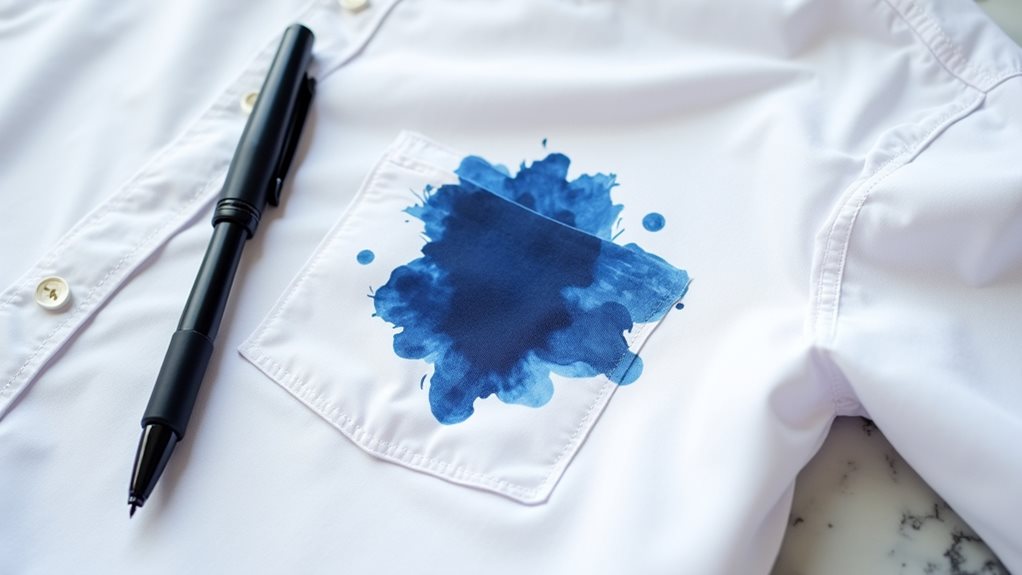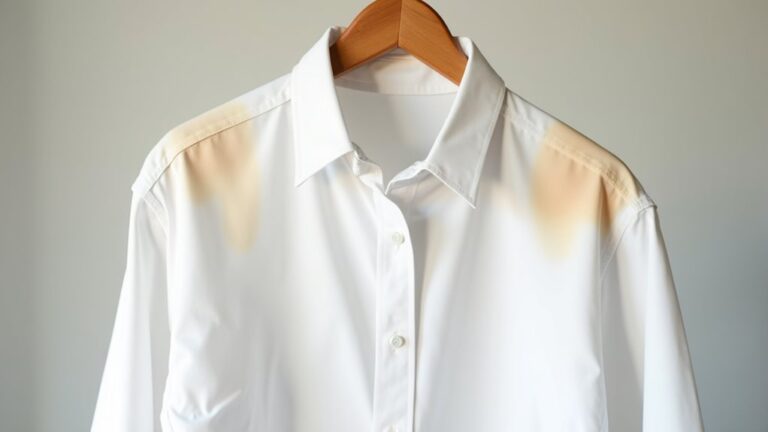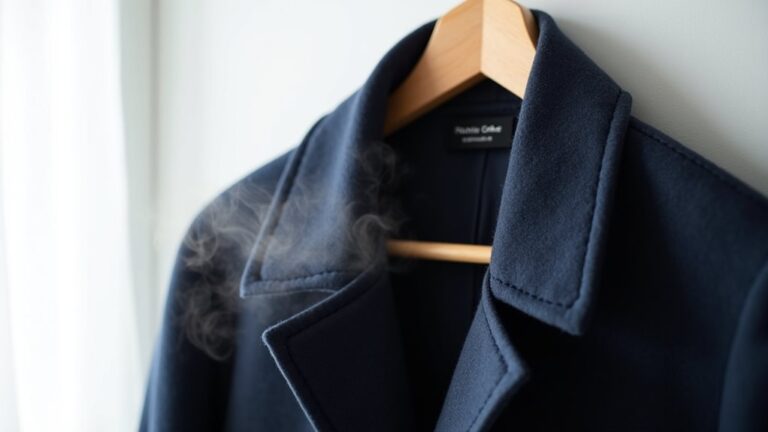Yes, dry cleaning can effectively remove most ink stains, though your success depends on acting quickly and choosing the right type of ink. Professional cleaners use specialized solvents like perchloroethylene that dissolve ink’s chemical bonds without spreading the stain deeper into fabric fibers, unlike water-based home remedies that often make things worse. Ballpoint pen ink comes out easier than gel or fountain pen ink, while some stubborn stains may only lighten rather than disappear completely—and there’s much more to this stain-fighting strategy.
Understanding the Challenge of Ink Stain Removal
When I accidentally dragged my favorite pen across my white button-down during a particularly animated conversation last week, I watched in horror as the navy ink bloomed across the fabric like a tiny storm cloud.
Honestly, my first instinct was to grab the nearest napkin and start scrubbing—which, as I learned the hard way, was absolutely the worst thing I could’ve done.
Ink stain removal is notoriously tricky because these stubborn stains actually spread when you try to remove at home with water or soap, pushing deeper into fabric fibers where they’re even more difficult to remove.
That’s why professional dry cleaners, with their specialized dry cleaning solvents, spotting agents, and expertise and equipment, emphasize immediate action—the sooner you bring it in, the better their chances of success.
However, it’s important to avoid home remedies when dealing with ink stains, as these DIY attempts can actually set the stain permanently and make professional removal impossible.
Types of Ink and Their Removal Difficulty
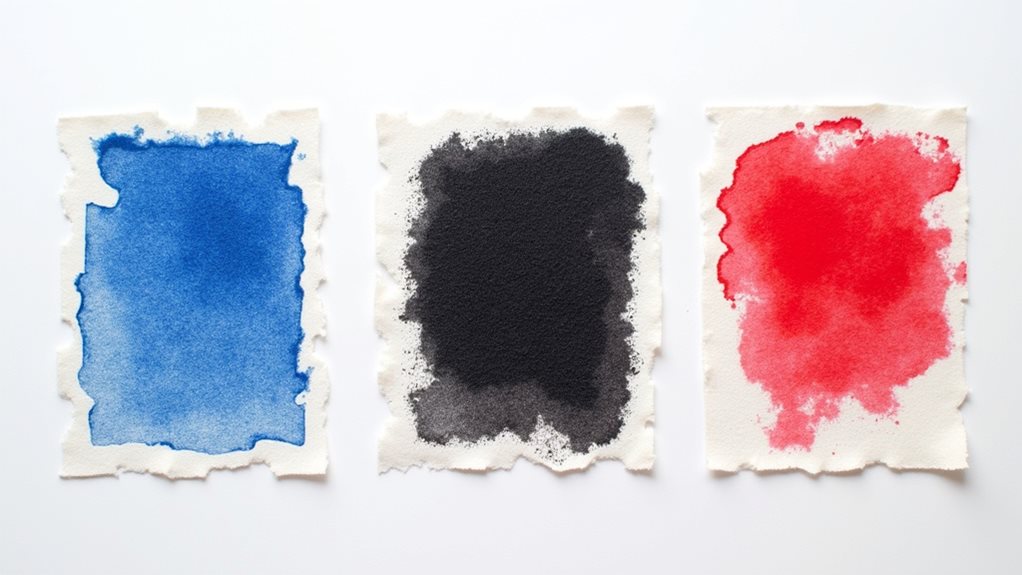
Although I thought all ink was basically the same until my dry cleaner educated me otherwise, the truth is that different types of ink present vastly different challenges when it comes to removal.
Understanding these differences can mean the difference between saving your favorite shirt and watching it become a cleaning rag.
Basic ballpoint pen ink, like BIC, typically yields to standard cleaning agents because of its simpler composition, while gel and fountain pen inks dig deeper into fabric fibers, creating stubborn stains that’ll test even professional cleaners’ expertise.
Indian ink? That’s the villain of the story 😅 – its permanent nature means immediate action becomes absolutely critical, and even experienced dry cleaners need specialized treatments to tackle these aggressive stains successfully.
The dry cleaning process uses chemical solvents instead of water to break down ink stains, which can be particularly effective since many inks are oil-based and don’t respond well to traditional water-based washing methods.
How Dry Cleaning Solvents Work on Ink Stains
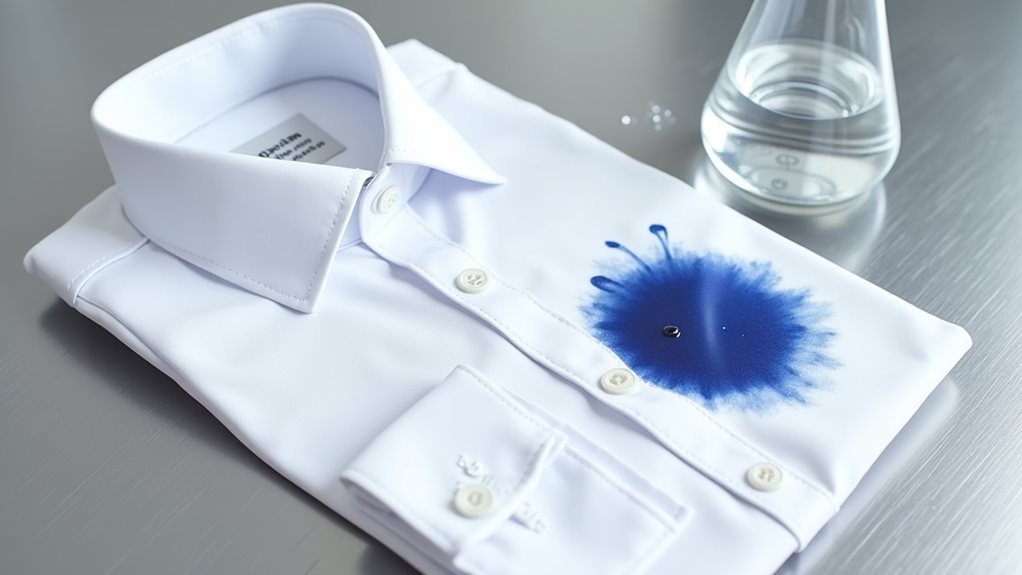
Now that you know which ink types you’re battling, let’s explore how dry cleaning solvents actually wage war against these stubborn stains.
Because frankly, watching my dry cleaner work her magic with perchloroethylene opened my eyes to a whole scientific process I’d never appreciated before.
Professional type cleaners can effectively remove ink stains because they don’t rely on water, which would spread the mess further across your favorite shirt.
Instead, dry cleaners use specialized solvents to penetrate deep into fabric fibers, dissolving the ink’s chemical bonds without damaging the material.
The cleaning process combines heat and steam to loosen stubborn stains on clothing, while enzyme-based solutions target specific ink components.
Perchloroethylene (PERC) remains the industry standard for tackling tough stains like ink due to its excellent ability to remove oils and greases without harming delicate fabrics.
Professional Techniques Used by Dry Cleaners
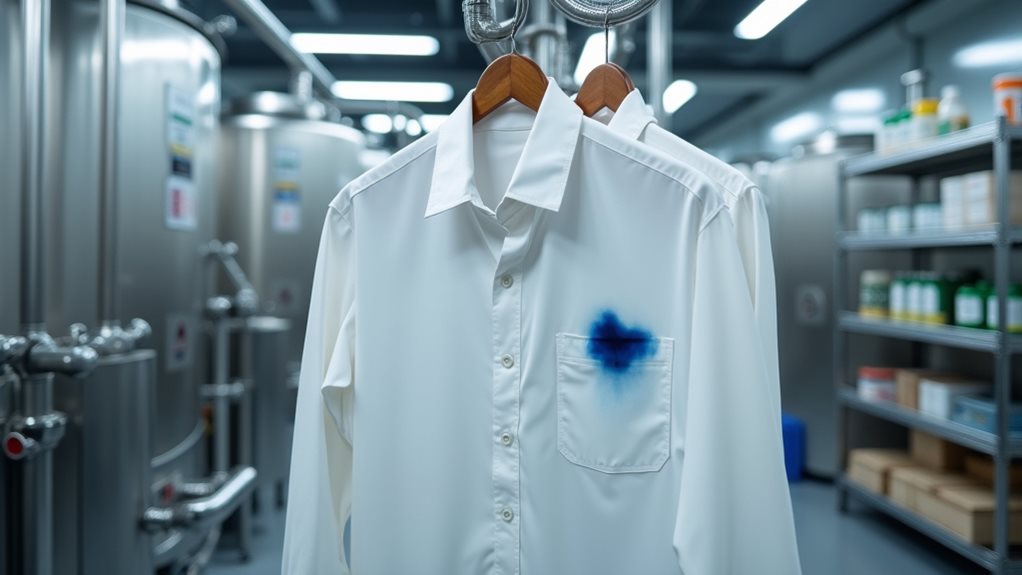
Imagine this: you walk into your trusted dry cleaner’s shop, that familiar chemical smell hitting your nose, and you’re about to witness what I call “stain surgery” at its finest.
Dry cleaners often employ professional techniques that’ll make you appreciate their expertise even more than you already do. They’ll start with specialized spotting agents customized to your specific ink type – because not all inks are created equal, trust me on this one.
Next comes pre-treatment with solvents designed to dissolve those stubborn oil-based components. Many shops use enzyme-based solutions that literally break down organic compounds in the ink.
The key? Quick action leads to a high success rate, even with the toughest stains that would’ve made you cry at home! 😅
Professional dry cleaners have the expertise to identify different stain types and apply the most appropriate treatment methods for each specific situation.
Factors That Affect Successful Ink Stain Removal
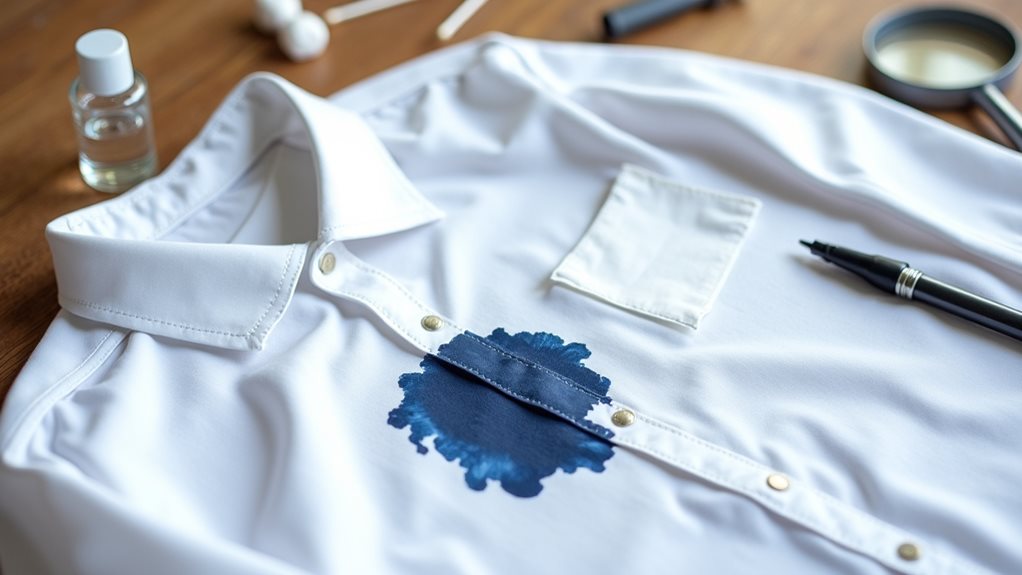
Your chances of saving that ink-stained shirt depend heavily on two critical factors that I learned the hard way after ruining my favorite blazer with a leaky gel pen 😅.
The type of ink you’re dealing with makes a huge difference, since that innocent-looking BIC ballpoint responds much better to treatment than stubborn gel or fountain pen inks that seem determined to become permanent residents in your fabric.
Time becomes your biggest enemy here, because fresh stains surrender easily while older ones bond with fibers like they’re planning to stick around forever.
This is why I now attack any ink mishap within minutes rather than letting it sit overnight like I used to do.
Ink Type and Age
Anyone who’s ever frantically tried to save a favorite shirt after a pen explosion knows that not all ink stains are created equal, and honestly, I learned this the hard way when my daughter’s gel pen decided to redecorate her brand-new school uniform.
The ink type makes a massive difference – water-based inks from basic pens come out relatively easily, while gel and oil-based inks cling stubbornly to fibers like they’re planning to stay forever.
The age of the stain matters just as much; fresh ink stains respond beautifully to immediate action, but older stains become increasingly stubborn.
When dealing with delicate fabrics or that special professional garment, different fabrics require different approaches, and sometimes only dry cleaning effectively removes what seems impossible.
Professional dry cleaning uses specialized chemical solvents instead of water, which can be particularly effective at breaking down certain types of ink stains without damaging delicate materials.
Fabric Material Considerations
The fabric beneath that dreaded ink stain holds just as much power over your success as the ink itself, and I discovered this truth when my silk blouse met my fountain pen in what can only be described as a tragic workplace accident.
Fabric material considerations become essential when you’re dealing with stains on delicate materials like silk or wool, which demand specialized solvents to avoid damage during the cleaning process.
Professional cleaners are experts at understanding how different types of fabrics respond to various treatments—cotton handles aggressive ink stain removal methods beautifully, while synthetic materials might melt under heat.
The type of stain you’re removing matters, but ultimately, matching the right approach to your fabric determines whether you’ll celebrate success or mourn another ruined garment.
Dry cleaning’s effectiveness on ink stains largely depends on the chemical solvents used, with modern alternatives to traditional perchloroethylene proving particularly successful at dissolving ink without compromising delicate fabric fibers.
Why Home Remedies Often Fail on Ink Stains
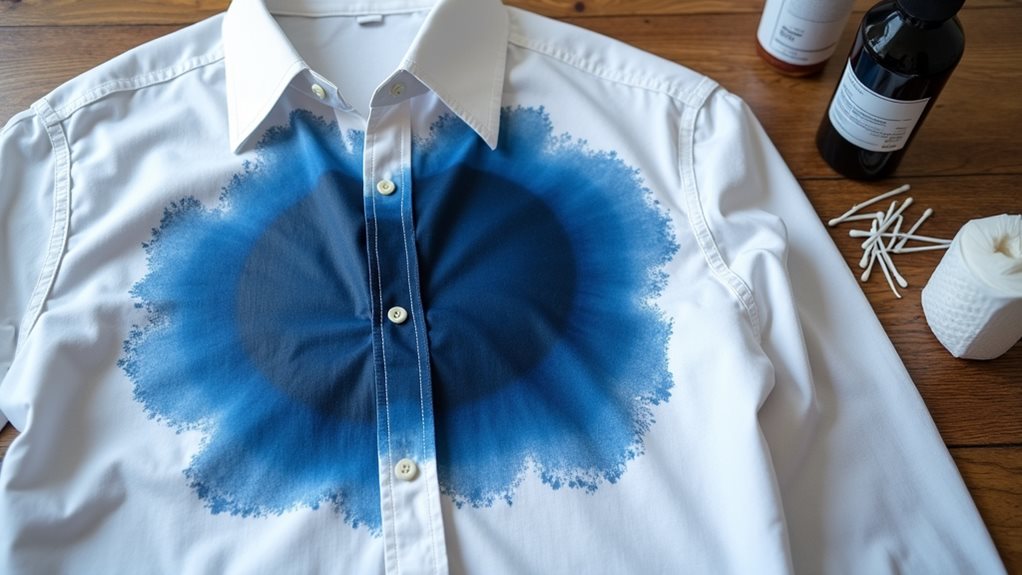
When you’re frantically dabbing at that fresh ink stain with whatever’s handy in your kitchen, you’re actually watching the ink spread like spilled coffee across a white tablecloth, creating a bigger mess than you started with.
Those well-meaning liquids you’re applying—whether it’s rubbing alcohol, hairspray, or that milk trick your grandmother swore by—are fundamentally pushing the ink compounds deeper into the fabric fibers, where they settle in like uninvited houseguests who refuse to leave.
I’ve seen too many people turn a quarter-sized ink spot into a palm-sized disaster because they didn’t realize that most home remedies work against you, not for you, when it comes to ink removal.
Professional dry cleaning uses powerful solvents like perchloroethylene that can break down ink compounds more effectively than household products, though it’s important to allow treated garments to air out properly before wearing.
Ink Spreads During Treatment
Although most people instinctively grab whatever cleaning product they can find when ink hits their favorite shirt, this well-meaning urgency often transforms a manageable stain into a spreading disaster that’ll make you want to hide that garment forever.
When you add water or household cleaners to ink stains, you’re fundamentally giving that stubborn mark permission to migrate deeper into the fabric fibers, creating an even bigger mess than you started with.
While cleaners may be able to tackle other spills effectively, ink’s liquid nature means it flows wherever moisture leads it.
If you act quickly and resist the urge to scrub, dry cleaning can remove these tricky stains using special solvents designed for getting rid of ink without the spreading issues that plague home remedies.
Professional dry cleaners use chemical solvents like perchloroethylene that dissolve ink without the risk of spreading that water-based cleaning methods create.
Liquids Push Stains Deeper
Here’s where things get really frustrating for anyone who’s ever grabbed a bottle of rubbing alcohol or hairspray thinking they’d found the magic solution – these liquid home remedies actually work against you by creating tiny highways that guide ink particles deeper into your fabric’s weave.
When you’re trying to remove stains at home, those liquids push stains deeper instead of lifting them out, fundamentally damaging fabrics while you think you’re helping.
I’ve watched countless people turn a small ink spot into a massive disaster simply because moisture reactivates the dye and spreads it further.
Quick action matters, but the wrong action makes everything worse – that’s exactly why professional treatment exists for stubborn ink stains and proper stain removal.
Professional dry cleaning uses specialized chemical solvents instead of water-based solutions, which is why it can effectively tackle ink stains that home remedies have failed to remove or even worsened.
When to Seek Professional Help for Ink Stains
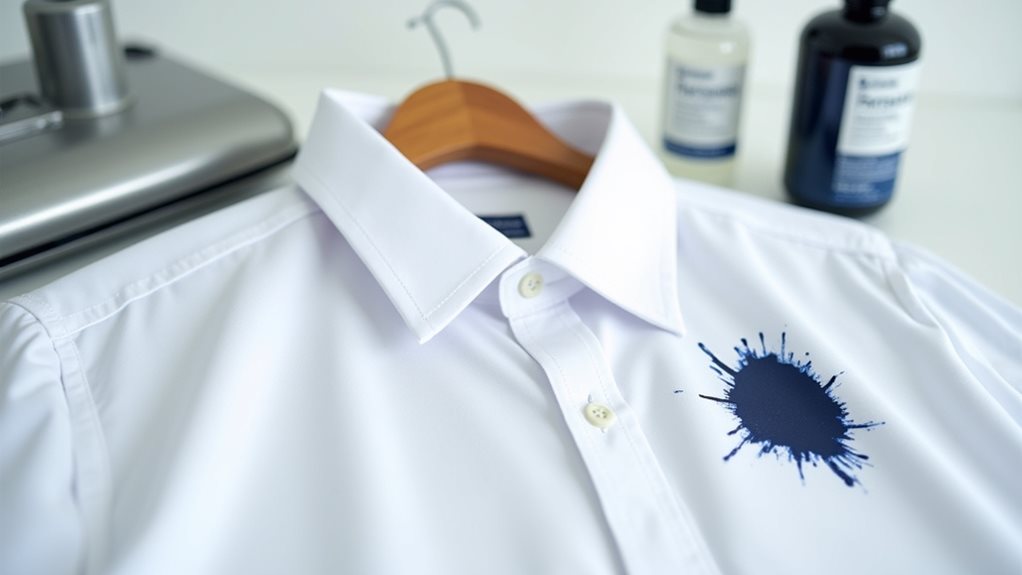
As someone who’s learned the hard way after turning a tiny ballpoint pen mark into a sprawling disaster across my favorite silk blouse, I can’t stress enough how crucial timing becomes when you’re facing an ink stain emergency.
The moment you notice that ink stain, you should seek professional help immediately – seriously, don’t even stop to Google home remedies!
Professional dry cleaners remove stains using specialized spotting agents designed specifically for different ink types, making their treatment method far more effective than anything you’ll find in your kitchen cabinet.
When you call for professional assistance, mention whether it’s ballpoint, gel, or fountain pen ink, as this helps them select the right approach.
Just like with perspiration marks, the chemical solvents used in dry cleaning can break down the proteins and compounds in ink more effectively than water-based cleaning methods.
Maximizing Your Chances of Complete Stain Removal
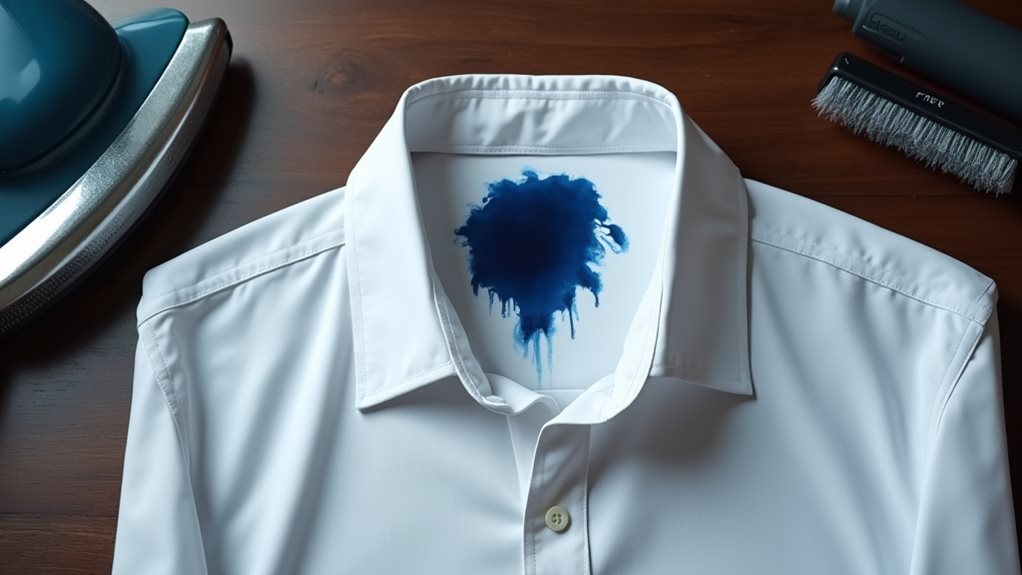
Why do some ink stains vanish completely while others leave behind ghostly reminders of our clumsiest moments? The secret lies in your immediate response and the dry cleaning process itself.
When stains can dry and set into fabric fibers, they become stubborn adversaries that even professional dry cleaners struggle against.
Here’s how to maximize your success:
- Act quickly before the ink penetrates deeper into fabric weave
- Provide detailed information about ink type to help professionals remove oil-based or water-based stains effectively
- Avoid home remedies that might spread the damage further
- Choose experienced cleaners who use specialized spotting agents for targeted treatment
It’s important to note that some stains may be lightened rather than fully removed, but proper stain removal techniques greatly improve your odds! 😊

